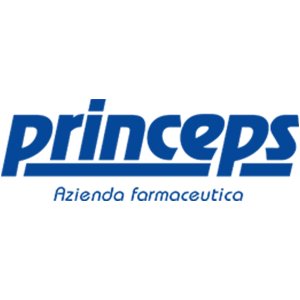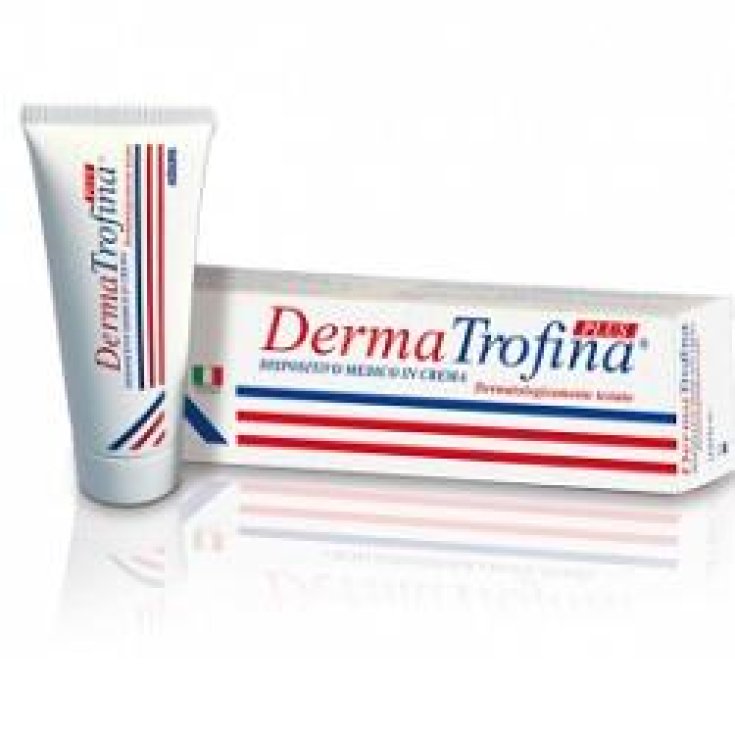Dermatrofina Plus Cream 30g
18.91€
22.24€

- Brand: PRINCEPS Srl
- Product Code: 931643050
- EAN:
- Availability: In Stock
- Purchase 3 items for 18.53€ each
- Purchase 4 items for 18.15€ each
- Purchase 5 items for 17.78€ each
PLUS
DermaTrofina
CE medical device, class I, which thanks to a physical mechanism, exerts a barrier action on wounds and promotes healing. Useful for the prevention of bedsores, the absorption of exudates and the repair of wounds that do not have damaged the dermis.Zinc oxide
It has astringent, protective and antiseptic properties. It is used topically as a soothing and protective agent and in mild abrasions, burns and superficial uncomplicated ulcers in patients with diabetes. Not recommended when necrosis involves deep tissue.
Silicon dioxide
In its gelled form it contributes to the absorption of exudates. It facilitates the drying of the macerated areas, reducing rubbing thanks to the absorbent action. It acts as a shockproof molecule.
Wheat germ oil (triticumvulgare)
This oil is recommended to compensate for the dryness of dry and very dry skin, for its moisturizing and nourishing action. Wheat germ oil reinforces the insufficient or even missing hydrolipidic film. It is useful for promoting the reduction of damage due to atmospheric pollution, reduces the oxidation process of the cells and therefore the formation of free radicals. It is a cell regenerator and is recommended for the skin.
Hyaluronic acid
It is a substance that exists naturally in our body. It is produced by particular cells called fibroblasts. It is mainly found in the dermis and allows to maintain the right degree of hydration, turgidity and plasticity of the fabric, thanks to its particular chemical-physical characteristics that give it a high hydration capacity. Chemically it is a glycosaminoglycan consisting of an unbranched chain of thousands of disaccharide units formed by residues of glucuronic acid (a derivative of glucose) and N-acetylglucosamine.In vivo, all carboxylic groups of glucuronic acid are completely ionized giving the molecule of high hyaluronic acid polarity, and consequently a high solubility in water. Thanks to this property, the hyaluronic acid is able to complex itself with many molecules of water reaching a high degree of hydration. It is an essential molecule for the formation of the collagen matrix, of elastic fibers and for the maintenance of skin hydration; it is, in fact, capable of absorbing and firmly retaining large quantities of water, always guaranteeing the right degree of moisture in the skin. In addition to its structural and moisturizing function, hyaluronic acid plays an important role in preventing damage to cells and tissue from physical stress by acting as an anti-shock molecule and an efficient lubricant. It is biocompatible and not immunogenic.
Cornstarch
A powdery substance derived from maize, inert on the skin and wounds, it has a remarkable ability to absorb exudates. It facilitates the drying of the macerated areas, reducing rubbing thanks to the absorbent action. It acts as a shock absorbing molecule and is a good lubricant.
L-proline, L-lysine
Amino acids of which collagen is composed, a fundamental substance of tissues, is widely represented in the skin. They are fundamental units for skin tissue repair.
L-leucine
Branched-chain amino acid, it interacts with the skin providing energy to the tissues and facilitates healing.
L-glycine
Non-polar amino acid makes up about one third of collagen. Glycine is also present in elastin. Elastin is a fibrous protein present in the connective tissue, mainly composed of the amino acids glycine, valine, alanine and proline, a fundamental constituent of elastic fibers, synthesized in fibroblasts in the form of a large molecule capable of organizing itself through cross-links (desmosine structures) in an extremely stable structure. insoluble. Elastin gives the skin its characteristic elastic response when it is subjected to mechanical stress.
Vitamin E
Antioxidant, LDL (low density lipoprotein) protects the lipids of cell membranes, the main target of free radicals. Topically, vitamin E is absorbed by the skin, has a moisturizing, anti-inflammatory and soothing action. Applied to the skin, it reduces the formation of lipoperoxides and slows down photoaging, facilitates tissue repair.
Niacin
It takes part in the reactions of cellular respiration, synthesis and demolition of diamino acids, fatty acids and cholesterol. Promotes skin trophism.
2-Phenoxyethanol
Antifungal preservative, stabilizer.
How to use
Wash your hands well. Take some product from the tube and distribute it delicately on the wound and in the immediate vicinity. Cover with gauze. Repeat the operation until complete healing.
Warnings
Do not use in case of deep wounds, the product does not replace medical intervention. If in doubt consult a doctor before application. In the event of concomitant use of other products, check the interactions. Do not inhale and apply to the eyes. Close the jar after use and keep out of reach of children under 6 years.
storage
Store in a dry place and at room temperature. Do not expose to heat sources.
Components
Water dep .; triticum vulgare germ oil; L-glycine; zinc oxide; L-proline; L-lysine; 2-phenoxyethanol; Vitamin E; L-leucine; sodium hyaluronate; niacin; excipients: C12-15alkylbenzoate; methylglucose quistearate; cetearyl alcohol; propyl glycol; vaseline; glycerol; triethyl citrate; carbomer; triethanolamine; dimethicone; imidazolidinyl urea; BHA; Disodium EDTA; methylchloroisothiozolinone; methylthioazolinone.
Format
Pack of 30 g of cream.
Bibliography
- Medicamenta pag 490-491 Acta n 1 - 1955 article 3 pdf Nutritional supplements rewie: Wheat Germ Oil Nutritional Compound
- Medicamenta pag 1435: 1437 F Nachbar HC Korting The role of Vitamin E in normal and damaged skin. J.Mol.Med (1995) 73: 7-17
- R.Cassino, E. Ricci: Aminoacid and wond bed: a possibleinteraction for topic and general treatment in the chronic skin lesions repair.Actavulnol 2005; 3: 111-5
U.Buttoni et al: The Basics of Dermatology: Anatomy "Physiology" Acura Elementary Lesions by Giuseppe Micali, Gabriella Fabbrocini, Giuseppe Manfrecola, Antonella Tosti, Stefano Veraldi, Daniele Innocenzi; page 240
- Merk manual 10 Dermatological diseases: 110 Principles of topical dermatological therapy

